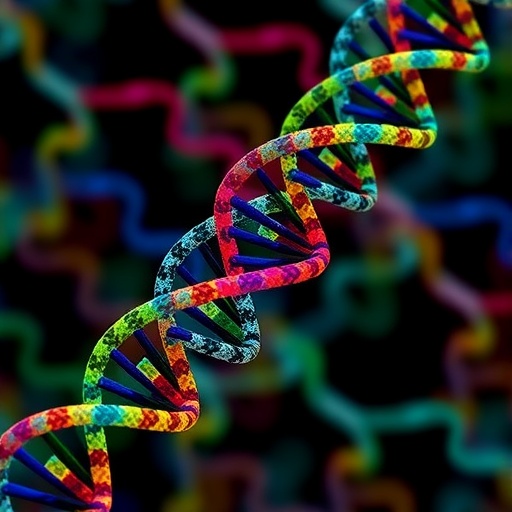
In a groundbreaking study that challenges long-held perceptions of placental biology, researchers have uncovered a remarkable degree of genetic diversity within early human placentas. Published in Nature Communications, this discovery not only transforms our understanding of placental development but also opens new avenues for exploring how the earliest stages of pregnancy might influence fetal health and disease susceptibility later in life. Using advanced deep genome sequencing techniques, the team has revealed that the placenta is not a genetically uniform organ, but rather a mosaic of distinct genetic populations, each with its own unique mutations and genomic signatures.
The placenta, an ephemeral yet critical organ, facilitates nutrient and gas exchange between mother and fetus, orchestrating the complex hormonal and immunological ballet essential for successful gestation. For decades, the placenta was viewed largely as a homogenous tissue, presumed to arise from a single clonal origin early in embryogenesis. However, by applying state-of-the-art sequencing approaches that examine the genome at an unprecedented resolution, the researchers have illustrated an unexpectedly intricate genetic landscape. This heterogeneity suggests that different regions of the placenta may be evolving in parallel during development, accumulating distinct somatic mutations that reflect diverse cellular ancestries.
Such mosaicism in placental tissue could carry profound implications not only for fetal development but also for maternal health. The study posits that regional genetic variability might contribute to the functional specialization within the placenta, potentially influencing nutrient transport efficiency and angiogenesis at a microanatomical level. Moreover, it raises compelling questions about the origins of placental pathologies, such as preeclampsia and fetal growth restriction, which might arise from disruptions in this delicate genetic milieu. The presence of widespread genetic heterogeneity invites a re-examination of how placental samples are interpreted in both clinical diagnostics and research contexts.
.adsslot_nogTJHFqL4{width:728px !important;height:90px !important;}
@media(max-width:1199px){ .adsslot_nogTJHFqL4{width:468px !important;height:60px !important;}
}
@media(max-width:767px){ .adsslot_nogTJHFqL4{width:320px !important;height:50px !important;}
}
ADVERTISEMENT
To achieve this level of insight, the researchers employed deep whole-genome sequencing on samples derived from early-stage human placentas, meticulously dissected to preserve spatial information. The team’s computational analyses revealed that many placental cells harbor numerous unique somatic mutations, indicating that the organ comprises multiple genetically distinct clonal populations. Importantly, the findings challenge the paradigm that the placenta’s genome is relatively static post-conception, instead suggesting ongoing genomic diversification during early gestational phases.
These novel data have profound implications for our understanding of cellular dynamics in placental development. The mosaicism observed implies that the placenta is subject to localized selective pressures or microenvironmental influences that drive clonal expansions and contractions, somewhat analogous to the processes seen in tumorigenesis, albeit in a physiological context. Such parallels offer intriguing hypotheses about how somatic evolution might be harnessed or modulated to optimize placental function or mitigate disease risks.
Further, this research casts light on the intersection between the placenta’s genomic landscape and the maternal immune system. Given the immunologically unique nature of the placenta—acting as a semi-allograft to avoid maternal immune rejection—the genetic variability within placental cells might influence immune recognition and tolerance mechanisms. Variations in surface antigen expression caused by somatic mutations could modulate the maternal-fetal interface’s immunogenicity, potentially altering susceptibility to immune-mediated pregnancy complications.
From a translational perspective, the acknowledgment of genetic heterogeneity within the placenta urges a reassessment of biomarker discovery efforts. Historically, placental biopsies used to gauge fetal well-being or diagnose pregnancy disorders might provide misleading information if sampling ignores the underlying mosaicism. Instead, comprehensive analyses that account for spatial genomic patterns could improve accuracy, allowing for the development of personalized diagnostic tools and therapeutic strategies.
Moreover, the study’s revelations have ramifications for evolutionary biology and developmental genetics. The presence of somatic mosaicism in an organ central to reproduction underscores the dynamic nature of the human genome during early life stages, illustrating that genetic change is not confined to inherited germline sequences but continuously shaped during development. This challenges traditional views separating germline and somatic lineages and emphasizes the need to incorporate somatic genetic variability into models of human biology and disease.
By integrating deep genomic data with careful histological mapping, the authors constructed a nuanced portrait of the spatial and temporal heterogeneity that characterizes early placental tissue. Their work serves as a blueprint for future investigations aimed at dissecting the functional consequences of these genomic patterns and understanding how they intersect with physiological and pathological processes.
In light of these findings, the scientific community faces critical questions: What drives the emergence of such diverse genetic clones within the placenta? Are these mutations simply passengers without consequence, or do they confer advantages or vulnerabilities within the microenvironment of the maternal-fetal interface? How might this diversity affect the placenta’s capacity to adapt to maternal or environmental stressors?
Additionally, this study sets the stage for exploring therapeutic interventions that might mitigate adverse outcomes attributable to placental genetic mosaicism. If certain clonal populations contribute disproportionately to disease phenotypes, targeted therapies could be developed to modulate clonal dynamics or reinforce tissue function. Such interventions might one day improve pregnancy outcomes by preserving placental integrity at the genomic level.
Collectively, these discoveries push the frontier of reproductive genetics, emphasizing the placenta not merely as a transient organ but as a genetically complex entity with potential long-term impacts on health. The implications extend beyond obstetrics, touching on fundamental principles of developmental biology, immunology, and evolutionary medicine.
As research continues to dissect the intricate web of genomic variation within placentas, it is becoming increasingly clear that understanding this complexity is essential for unlocking new paradigms in maternal-fetal medicine. The deep sequencing methodologies applied here highlight the power of next-generation genomic tools to reveal hidden facets of human development, with promising prospects for improving diagnostics, therapeutics, and preventive strategies in pregnancy.
In conclusion, the work by Miceikaite and colleagues represents a landmark in genomics and reproductive biology, exposing the early human placenta as a genetically heterogeneous organ shaped by somatic mutations and clonal dynamics. This paradigm shift not only redefines our comprehension of placental formation but also lays a foundation for future research endeavors aimed at bridging the gap between genotype and phenotype in the context of human pregnancy.
Subject of Research: Genetic heterogeneity and somatic mosaicism within early human placentas.
Article Title: Deep genome sequencing reveals extensive genetic heterogeneity in early human placentas.
Article References:
Miceikaite, I., Fagerberg, C., Brasch-Andersen, C. et al. Deep genome sequencing reveals extensive genetic heterogeneity in early human placentas. Nat Commun 16, 7873 (2025). https://doi.org/10.1038/s41467-025-63296-3
Image Credits: AI Generated
Tags: advanced sequencing techniquesdeep genome sequencingearly human placentasfetal health and disease susceptibilitygenetic diversity in pregnancygenomic signatures in placentamaternal-fetal interactionmosaicism in placental tissueplacental biology breakthroughsplacental development insightsplacental genetic diversitysomatic mutations in placenta




